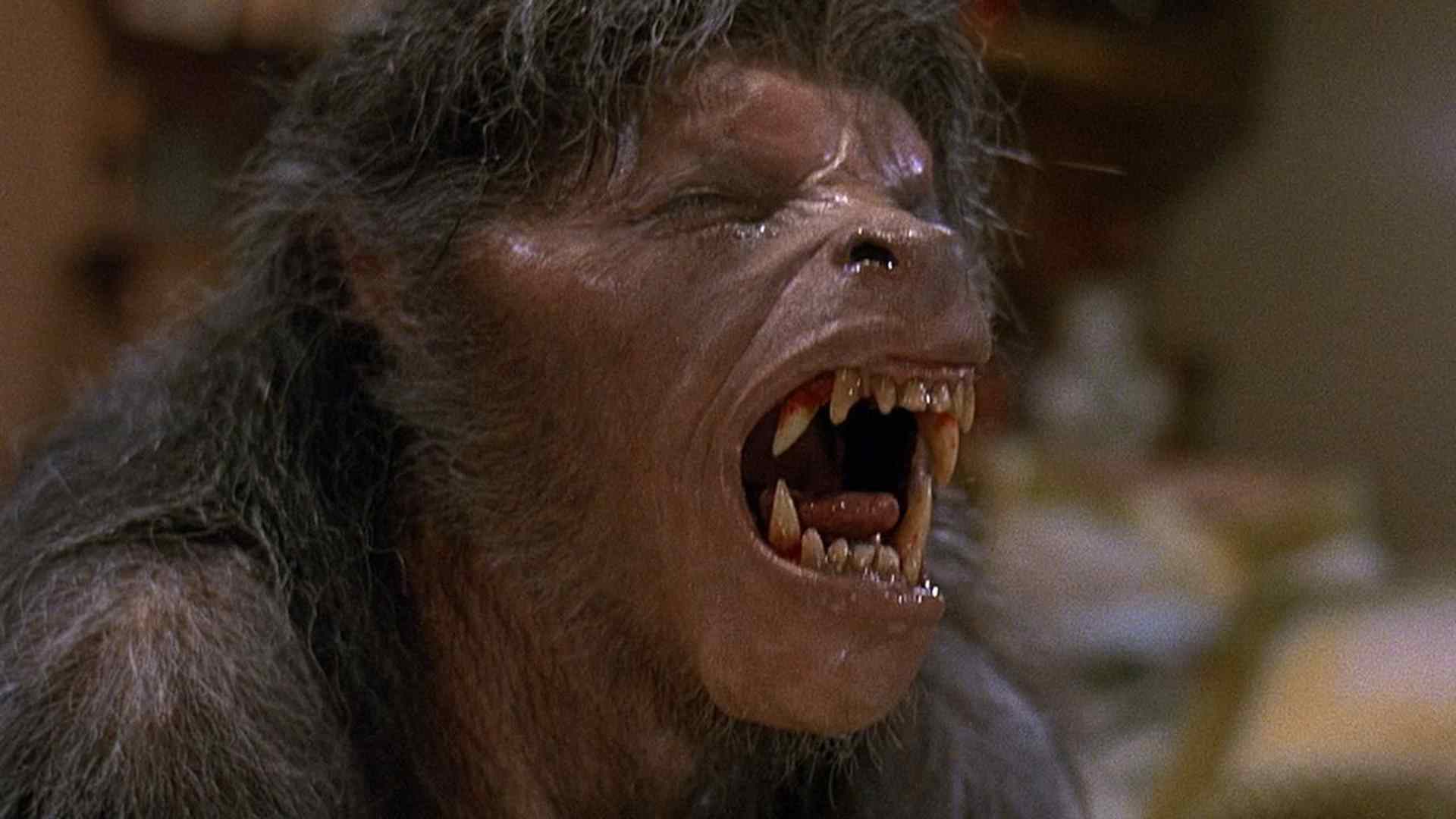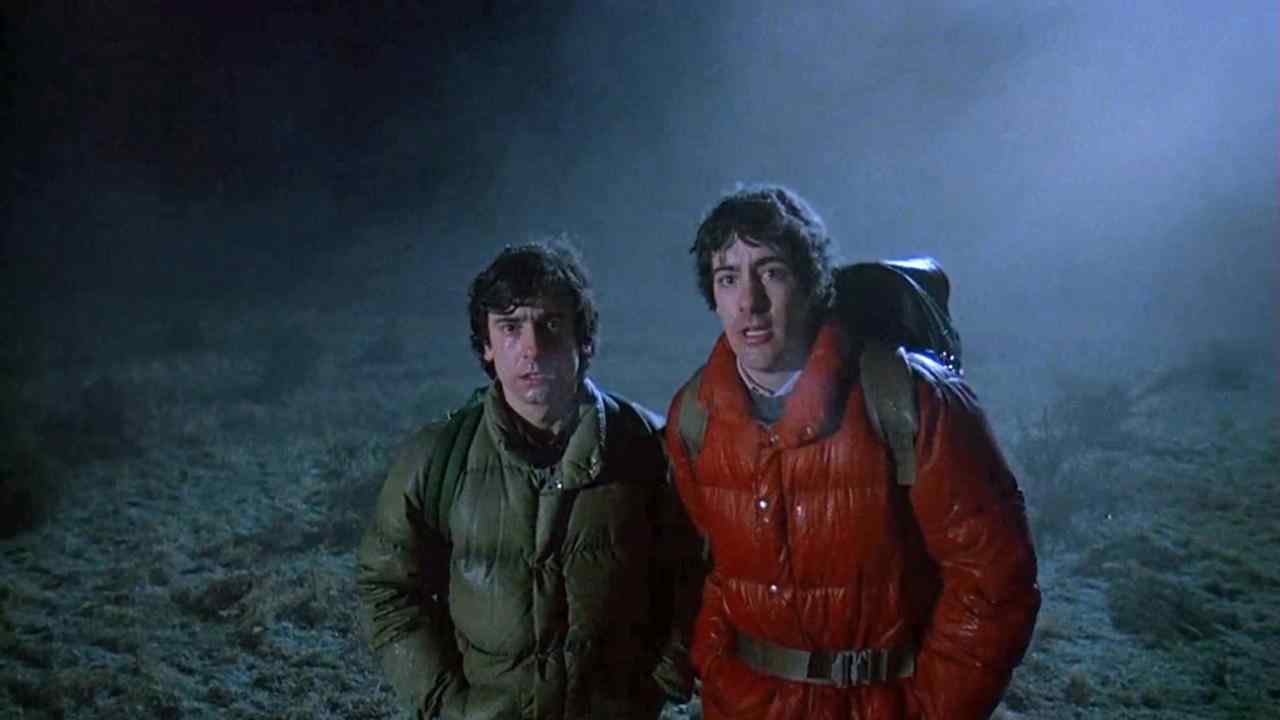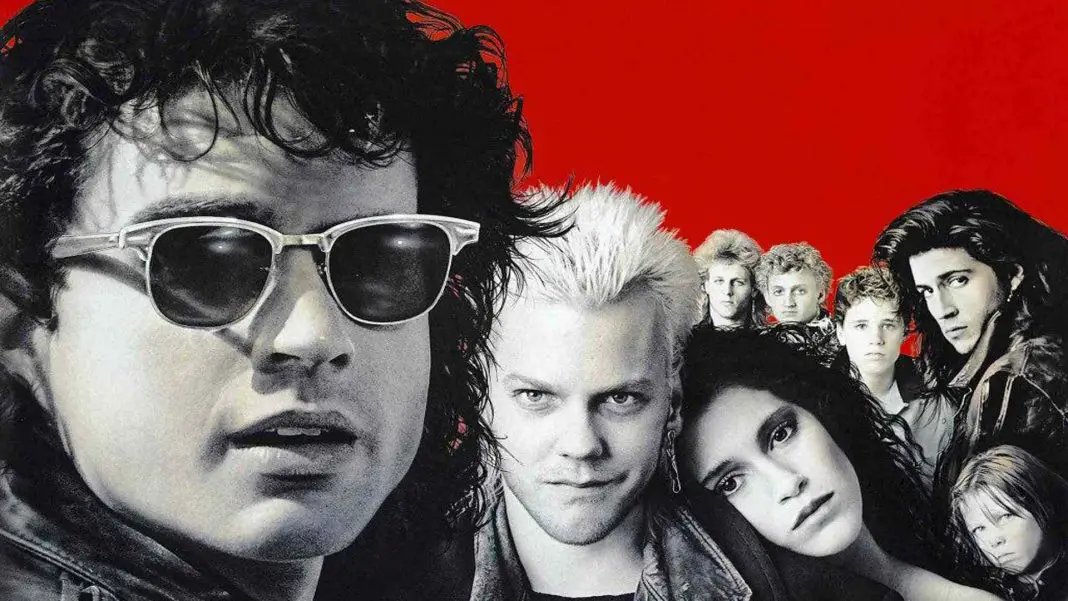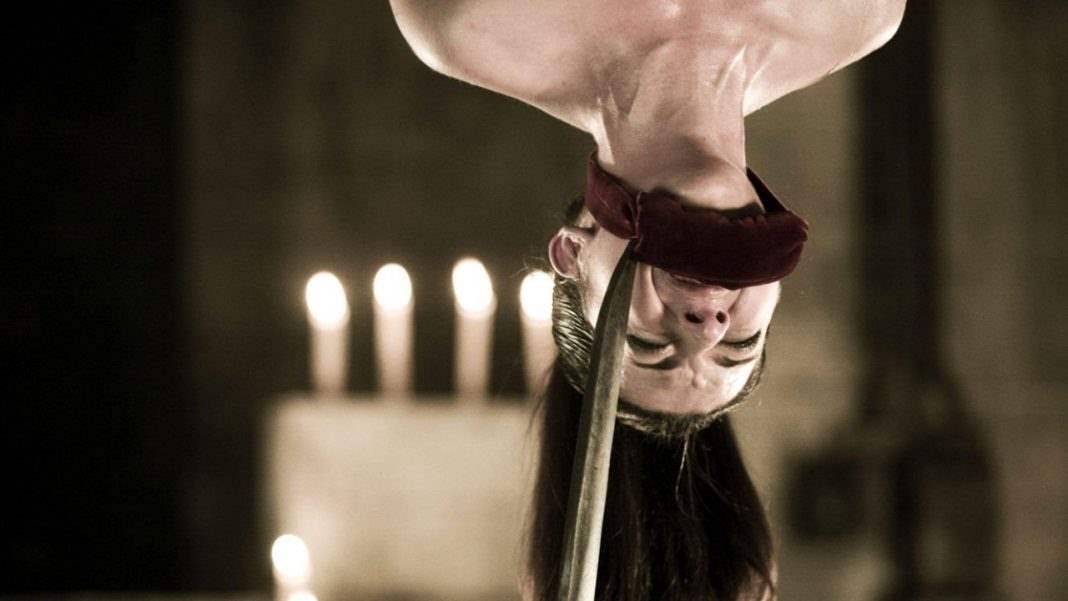John Landis’s An American Werewolf in London is, simply put, one of the best werewolf movies ever made. Landis had already made a name for himself in comedy, directing movies that became instant classics like Animal House and The Blues Brothers, by the time he switched gears with An American Werewolf in London. But the movie had been in his head for years. In fact, Werewolf was the first movie that Landis wrote, at the age of sixteen. It wasn’t until his career flourished that he was able to raise the funding to get the movie made.
While the movie is definitely a horror film, it does not lose the comedic nature of Landis’s other work, and that’s part of what has allowed it to survive for so long. An American Werewolf in London isn’t horror comedy, per se, it’s simply a horror film that happens to be very funny.

David wakes up in the hospital two weeks later and things are different right off the bat. He’s starting to have nightmares. Vivid dreams of running through the wilderness and stalking deer. That, and the classic nightmare sequence that graphically depicts Nazi werewolves breaking into David’s home and making him watch as they murder his family. This scene is one of the first scenes in the film to truly bring the horror across and has become infamous. People have said the scene was out of place, but that couldn’t be further from the truth. An American Werewolf in London is a film from a Jewish director and features a Jewish protagonist, but taken on its own the Nazi horror fantasy simply makes for a memorable and frightening sequence.
 The horror and humor begin to blend together perfectly when David begins to receive ghostly visits from his friend, Jack. Each time that Jack appears to David, he is more and more decomposed. It’s ghastly, but played perfectly for comical effect. Each time Jack tries to convince David to kill himself before he can hurt anyone else, but David tries to convince himself that he’s delusional.
The horror and humor begin to blend together perfectly when David begins to receive ghostly visits from his friend, Jack. Each time that Jack appears to David, he is more and more decomposed. It’s ghastly, but played perfectly for comical effect. Each time Jack tries to convince David to kill himself before he can hurt anyone else, but David tries to convince himself that he’s delusional.
It’s actually fairly late into the film before David undergoes the transformation and becomes a werewolf. This is the most famous scene from the film, though, and the one that resulted in An American Werewolf in London—well, Rick Baker in particular—winning the very first special makeup Oscar. It comes almost out of nowhere, sudden and powerful as David doubles over in pain, screaming, and the transformation comes on in seconds. It is not quick, however.
At this point in time, most werewolf movies had used the transformation effects put in place by The Wolf Man in the 1940’s. These were created via time-lapse to show the appearance of hair growing all over the body. Nobody was really expecting to see an actual transformation from man to wolf, but that was what An American Werewolf in London gave them. It’s a stunning, haunting sequence that will always live on as one of the most shocking scenes in horror history. The fact that it happens so late in the film only helps it, as it is more than worth the wait.
 While numerous werewolf movies existed before this one and certainly many followed on its heels, one key aspect of its mythology is unique to this film alone, and that is the werewolf being haunted by the ghosts of their victims. It’s a very tragic subplot for such a tongue-in-cheek horror film and that only makes it better. This aspect of the folklore has only ever been used on film in American Werewolf in London and its so-called sequel, An American Werewolf in Paris. It’s impossible to imagine this movie without these scenes, though, which only improve as the movie goes on and the bodies pile up. The idea of the victims haunting their killer is also crucial to the very idea of the werewolf as a traditionally tragic creature. It all factors in as another manifestation of guilt.
While numerous werewolf movies existed before this one and certainly many followed on its heels, one key aspect of its mythology is unique to this film alone, and that is the werewolf being haunted by the ghosts of their victims. It’s a very tragic subplot for such a tongue-in-cheek horror film and that only makes it better. This aspect of the folklore has only ever been used on film in American Werewolf in London and its so-called sequel, An American Werewolf in Paris. It’s impossible to imagine this movie without these scenes, though, which only improve as the movie goes on and the bodies pile up. The idea of the victims haunting their killer is also crucial to the very idea of the werewolf as a traditionally tragic creature. It all factors in as another manifestation of guilt.
The last time Jack appears to David, he’s practically a skeleton, and he is surrounded (in a porno theater, a location chosen by Jack) by his numerous victims from the previous night. Jack has constantly told David to kill himself before he hurt people, but now he’s hurt a lot of people. They’re all fine with the idea of David killing himself, and offer him very vivid specifics as to how he might do it. This scene perfectly conveys the movie’s sense of humor, which can be hysterical and dark at the same time. It’s not only the absurdity of the situation that makes it funny, but the pain itself. It might be the film’s funniest scene, but it is could easily have been the saddest. The balance in tone is the most important thing in a movie like this. Too many films have gone too far in one direction or the other. When it comes to a perfect blending of laughs and scares, few if any films have done it better than An American Werewolf in London.
One of the most tragic things about David’s character is that deep down he knows his dead friend is right. He is responsible for what he’s done as a werewolf, even if he can’t remember it. He has no problem believing that. Before any of the signs of lycanthropy come into play, David is already feeling incredibly guilty for Jack’s death. But when Jack eventually manifests himself to come and speak with David, David won’t hear any of it. He refuses to listen to Jack, he ignores Jack when his friend tries to explain what he will become. And of course he pays for it.
 The climax of the film is explosive. The entire film was a melting pot up until this scene and it’s everything that undead Jack was trying to avoid. One large focus of the movie is a mixing of old and new culture, of ancient superstitions and the modern world. David and Jack’s refusal to listen to the superstitious folk at the Slaughtered Lamb (and their reluctance to tell their ways to outsiders) got them into the whole mess to begin with. In many ways, the film simply could not end in any other way than the werewolf unleashed, rampaging through Piccadilly Circus. It’s a massive, explosive scene with a ton of stunt work that even showcases director John Landis (who had started in stunt work early in his career) getting tossed through a window.
The climax of the film is explosive. The entire film was a melting pot up until this scene and it’s everything that undead Jack was trying to avoid. One large focus of the movie is a mixing of old and new culture, of ancient superstitions and the modern world. David and Jack’s refusal to listen to the superstitious folk at the Slaughtered Lamb (and their reluctance to tell their ways to outsiders) got them into the whole mess to begin with. In many ways, the film simply could not end in any other way than the werewolf unleashed, rampaging through Piccadilly Circus. It’s a massive, explosive scene with a ton of stunt work that even showcases director John Landis (who had started in stunt work early in his career) getting tossed through a window.
An American Werewolf in London is the quintessential werewolf film. It’s one of the all-time great horror movies period, but it perfectly encapsulates everything that werewolf stories are inherently about. It’s about a mixing of the supernatural and modern worlds, the inherent guilt of the poor person fated to become a werewolf, and blends humor and horror in a way that most films fail to. The special effects are as stunning now as they were in 1981. Rick Baker’s werewolf transformation scenes are legendary. The werewolf itself is, wisely, never show all at once. This was a movie at the dawn of the “show don’t tell” era of effects-driven horror movies and wisely chose to show some restraint. The monster design is great, but the movie also knows when enough is enough and leaves something to the imagination.
For over thirty years this film has endured, never fading into obscurity. It may not have spawned the number of sequels that were produced in The Howling franchise. And the less said about the ill-fated sequel An American Werewolf in Paris the better. But the film stands perfectly well on its own. It even recently inspired an acclaimed attraction at Universal Studios’ Halloween Horror Nights. The legacy of American Werewolf is as strong as ever. It continues to make numerous favorite horror movie lists (and favorite comedy lists, for that matter) and will always stand as a shining example of the sub-genre.
Werewolves seem harder to get right than some other movie monsters. There are fewer great movies about the creatures than there are for vampires or zombies. An American Werewolf in London hangs as the full moon in that dark sky, not only shining down over other movies, but providing a beacon for all other werewolf films to strive toward.






